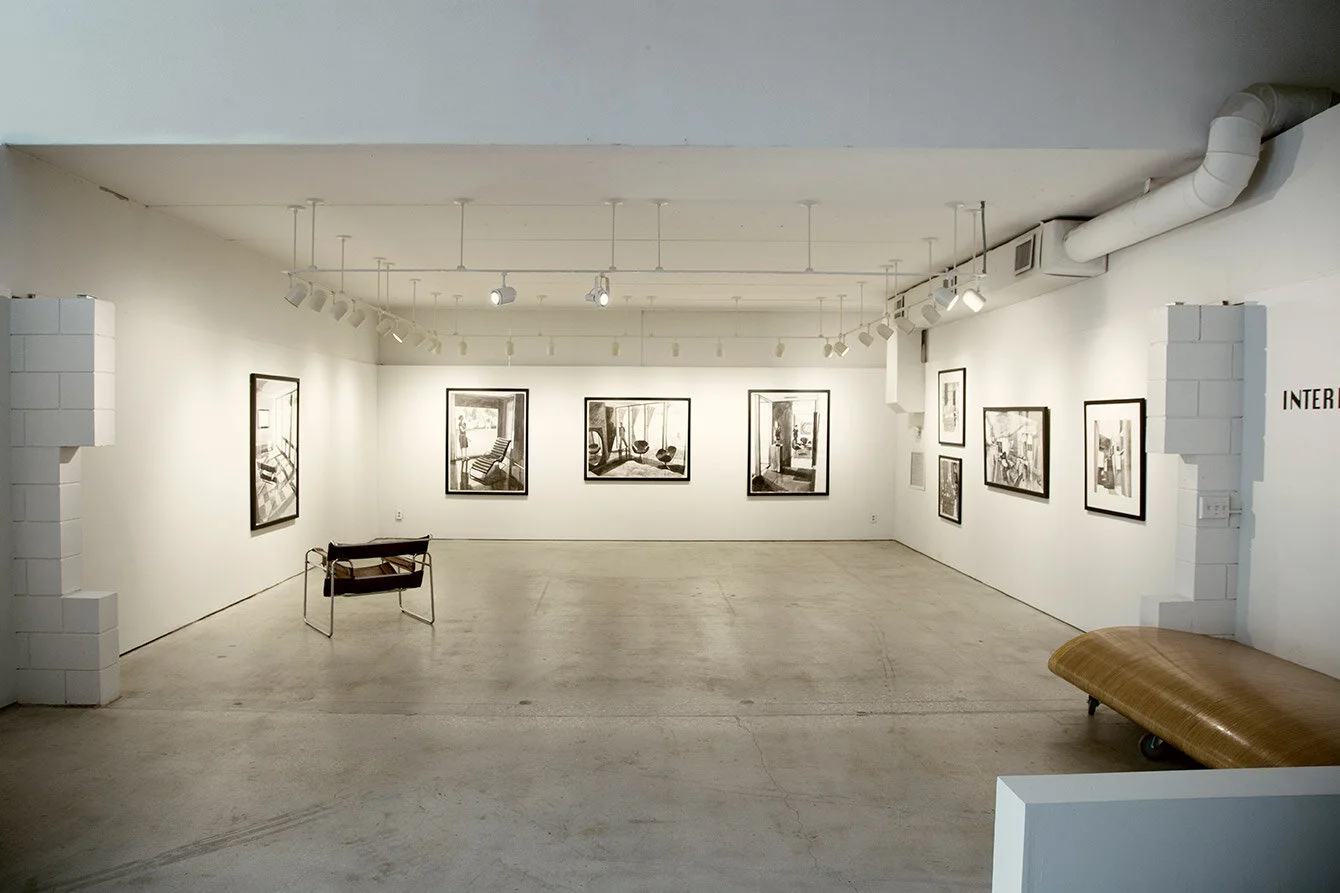INTERIOR EXHIBITION
Exhibitions
I was first captivated by Jeff Schwartz’ paintings shortly after my arrival in Sarasota in 2015. I walked into the Crossley Gallery and was immediately drawn to a painting depicting the interior of a bathroom. Specifically, I was drawn to the toilet. More specifically, to the cleaning bottles stacked on top of the tank—a completely mundane moment embodying the exquisite, transcendent, ethereal beauty of Giorgio Morandi, one of my favorite painters.
Such is the magic of paint, in the hands of a real painter. Jeff Schwartz is a real painter. But it turns out what captivated me wasn’t about paint. It was about space. It was Schwartz’ keen understanding of space, his ability to sculpt space, that has arrayed across a variety of media —photography, sculpture, painting, collage.
“My background began with sculpture more than image-making. At a very young age, I built forts. Over the years I moved into building and remodeling homes to make a living. Later, I picked up a camera and became fascinated with capturing images of light and space. At that time, I could not draw and was terrified of the process. I went to the Art Institute of Chicago to study Photography all the while working in construction to make money. After hundreds of hours in the darkroom developing my own film and images, I began to feel too distant from the creation of the images. I wanted and needed to be more involved with the building of the spaces and surfaces. Looking back it appears obvious that I would move into painting and drawing as my medium of choice, pulling my love and knowledge of building into the practice. My process began to replicate the actual spaces and environments I was experiencing in Chicago. The process of creating began to literally show the history of the making.”
The title of the exhibition is Interior and is meant to evoke the multiplicity of meaning embedded in that concept. Yes, these works appear to “depict” interior, domestic scenes, a la the tropes, protocols, and editorial conventions of the ubiquitous shelter magazines crowding the supermarket check out aisles and transit hub kiosks (depending on whether you are occupying suburban or urban space, respectively). But since the works are so laden with psychological gravitas, the title has as much, or more, to do with the concept of an interior life—the perpetual existential challenge posed by our first “home”, our bodies, and the cognitive disconnect of our consciousness residing within our physical beings. The work begs questions of space—the poetics of space, in the language of Bachelard—the way in which space holds memory, residue. For me, the work evokes those incredible 70s films that really capture the tension held in space—suspended among walls, sparse objects, and the ghostly, abstracted, barely-there people. I think of Godard’s Contempt, Antonioni’s Zabriskie Point, or more recently Coppola’s The Virgin Suicides and Spike Jonze’ H.E.R.
Part of why I really wanted to do a show of the work is because it really must be apprehended directly. Everything that is so spectacular about the work gets flattened and decimated in reproduction, especially in digital reproduction. I wanted more people to see the work “in person”, unmediated, up close.
Curiously, one of the first things that came to mind when I saw the work was Constable. Many people leap to Hopper with his work but that’s too narrative. I was struck by the impossibly clever way Schwartz deals with literal, physical space as opposed to psychological or illusory space—or perhaps the cognitive slippage between and among. The works are built up of piercing constructivist collaged bits and complex subtleties composed of different ways of both making and evoking space—white ground negative space, painted white, different paper/card stock thickness of white, thick enough to cast a shadow and hint at the micro-sculptural surface. Dozens of different shades of black and white and grey—with texture and topography—it’s like the difference between a b/w vintage print on a fiber-based paper expertly dodged and burned compared to a cheap digital print mass reproduced. Everything is lost except the composition, and even that is compromised relative to the “information” that is lost in translation (reproduction). I see these tiny shards of white cut card stock that serve to highlight much like a thick impasto daub of zinc oxide white in a Constable painting that just glows, pops from the surface, causing one to look and see where this source of sunlight hitting the painting could possibly be coming from. So while the discourse of photography is clearly evident in Schwartz’ collage/works on paper, he is and through a painter—when I see this work, I immediately reference other painters—Morandi, Wyeth, Constable, and yes, Hopper.
Perhaps we’ll have the opportunity to explore this relationship between painting, photography, and collage in Jeff Schwartz’ work in future exhibitions. For now, I encourage you to look closely and carefully at the surfaces of the work and marvel at what can only be experienced directly, what is “lost in translation” in reproduction.
Anne-Marie Russel, Exhibition Curator




